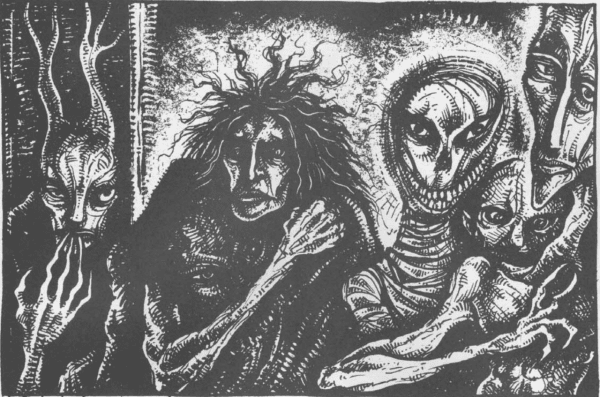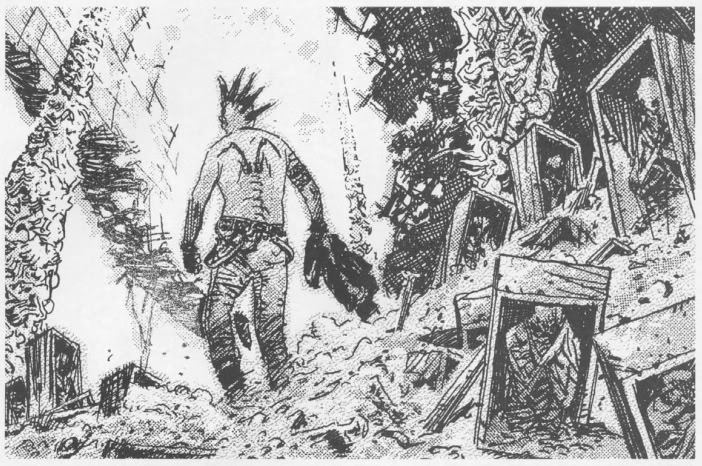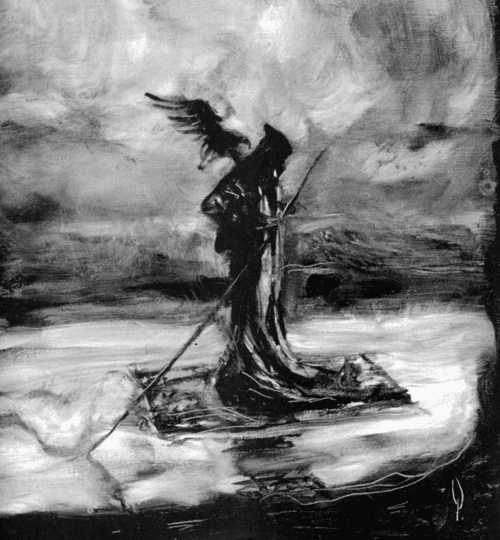Publisher(s) White Wolf System(s) Storyteller System | ||
 | ||
Publication date 1994 (1st edition); February 1, 1996 (2nd edition) Designer(s) Mark Rein·Hagen, Sam Chupp, Jennifer Hartshorn | ||
Wraith: The Oblivion is a role-playing game designed by Mark Rein·Hagen. It is set in the afterlife of White Wolf Game Studio's classic World of Darkness setting, in which the players take on characters who are recently dead and are now ghosts.
Contents
- A shroud to the shadowlands a tribute to wraith the oblivion
- Main Concept
- Setting
- System
- Books
- References

Wraith: The Oblivion featured an artistically consistent depiction of the afterlife and strong emotional themes, but was the least commercially popular of the World of Darkness games. White Wolf discontinued their production of the game line in 1999, before having published all material that was originally planned.

Following the game's cancellation in 1999, White Wolf revisited some of Wraith's themes in their role-playing miniseries Orpheus. Their 2009 release, Geist: The Sin-Eaters, worked as something of a spiritual successor to Wraith the Oblivion. In 2011, online role playing game store DriveThruRPG.com began offering the Wraith the Oblivion books in a print on demand format through the DriveThruRPG web site, making all books available for purchase once again. A 20th Anniversary print edition has also been announced by Onyx Path Publishing.

A shroud to the shadowlands a tribute to wraith the oblivion
Main Concept

The game of Wraith: The Oblivion sets the players as characters who have recently died and found themselves within a grim afterlife. Characters have the options of struggling to find a means of ascending into a 'true' afterlife (referred to in the game as Transcendence), becoming embroiled in the politics of the afterlife's denizens, or gradually succumbing to the dreaded Oblivion that seeks to devour all newly deceased souls.
Wraiths draw their strengths from the passions that held them to the living world. In game-terms, each character possesses Fetters, representing an object, place or person which binds them to the world of the living, and Passions, representing an emotion that they have not resolved. Fetters allow a Wraith to remain close to the world of the living, while Passions allow them to gain emotional energy to sustain themselves. However, each Wraith also possesses a secondary personality called a Shadow. Their Shadow, often portrayed by another player, works to assert dominance over the character. The Shadow's motives are always self-destruction of the Wraith. With a mix of emotional fetters and the confrontational play style that the Shadow presents, games of Wraith: The Oblivion are often powerfully emotive.
Setting
Wraith: The Oblivion primarily takes place in the Deadlands of the western world. There are two main regions of the afterlife within the game's setting. The first is referred to as the Shadowlands, which is a darkened reflection of the living world. Wraiths can explore the landscapes and cities as they were during their mortal life, but are unable to interact with it in any meaningful way without the use of special ghostly powers called Arcanoi.
Deeper into the underworld is the Tempest, a perpetually churning chaotic sea of darkness. Within the Tempest are several islands of stable reality, the largest one of which in the western world is the Empire of Stygia (also called the Dark Kingdom of Iron), a massive city-state founded by the legendary Charon. Stygia's authoritarian governing body, The Hierarchy, stands opposed to the disparate Renegades, who challenge its rulership for any number of political reasons, and to the Heretics, cults formed in search of Transcendence (officially proclaimed by the Hierarchy to be neither possible nor desirable). Unaffiliated wraiths are referred to as Freewraiths. The game permits the players to select any of these factions as playable options.
All Wraiths are constantly at risk from Spectres, beings which serve Oblivion and lurk within the seas of the Tempest. Most Spectres are the result of a Shadow taking complete control over a Wraith's personality. They are ruled in sections by ultra-powerful beings known as Malfeans (nightmarish eldritch entities that exist outside of reality). Ferrymen also exist, lone pathfinders who exist above political concern and act as guides through the Tempest and withstand the threat of the Spectres.
Because of the risk of the Spectres, the Hierarchy maintains their own standing army, divided into multiple different Legions based on cause of death. As well as striving to drive back the threat of the Spectres, each Legion's commanding Lord or Lady vies for control over Stygia for their own ends. The slave trade is highly active within the Hierarchy, with many Wraiths bought and sold for trade. Also, as physical objects rarely exist within the afterlife, some unfortunate Wraiths may be subjected to 'Soulforging', a process that renders them into inanimate objects - for example, each coin that exists for trade within Stygia is created from one forged Wraith.
Other Dark Kingdoms also exist in the Tempest, each claiming dominion over the Wraiths of a particular geographical region, such as the Bush of Ghosts, also known as the Dark Kingdom of Ivory, which holds sway over Africa's dead, and the Yellow Springs, also known as the Dark Kingdom of Jade, which rules over the dead of China and surrounding countries.
System
Wraith: The Oblivion uses White Wolf's Storyteller System. As in all Storyteller System games, there are several special rules and systems that support the theme of the game. The most notable are:
Other Arcanoi exist in the possession of minor Guilds and other Dark Kingdoms. Spectres also possess their own Dark Arcanoi in addition to the standard wraithly Arcanoi.
